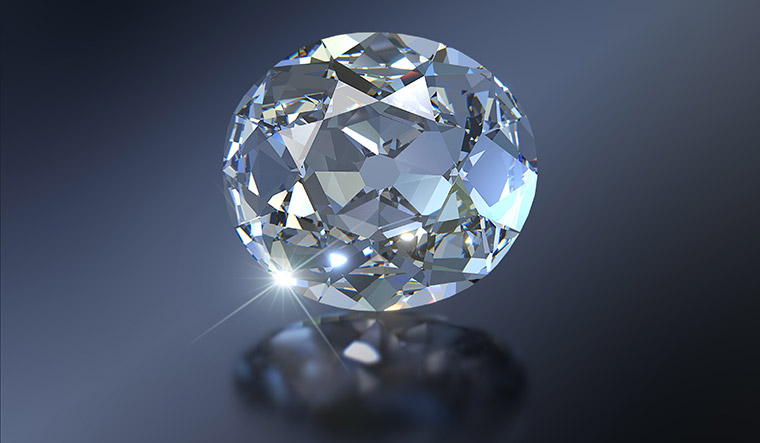KOHINOOR JOURNEY | THE PRICELESS INDIAN TREASURE
Throughout history, many people were envious of India’s richness. Because of this, the Arabs, Turks, and Afghans raided and stole the royal treasures in various Indian districts. The majority of Indian history is made up of tales of invasions and battles that altered many people’s fortunes, including that of Kohinoor. The Kohinoor diamond, which belongs to India but is currently languishing in Britain on the crown of the Queen Mother, is the most valuable diamond of all time. Its value cannot be determined, but it is safe to state that Kohinoor is the most expensive diamond in the world. We will follow Kohinoor’s journey from India to London to find out how this piece of wealth arrived there.
The diamond was transported from the Indian state of Andhra Pradesh to London over a long period of time by the Kakatiya, the Khilji, the Mughals, the Afghans, and the British. The unique diamond’s stunning beauty was so tempting that powerful emperors’ and kings’ senses were subjugated.
Koh-i-Noor’s Origin
The origin of the diamond is the subject of numerous contradictory stories. However, there is “extremely limited and imperfect” evidence of the KohiNoor’s history prior to the 1740s that may directly trace it to any old diamond, in the words of colonial administrator Theo Metcalfe. Although its earliest known weight is 186 old carats, the original weight of the item has not been recorded. (191 metric carats or 38.2 g). An account of Nader Shah’s invasion of Northern India in the 1740s by Muhammad Kazim Marvi has the first independently verifiable mention of the diamond. According to Marvi, Nader Shah stole the Koh-i-Noor from Delhi together with other stones for the Mughal Peacock Throne.
The Kakatiya dynasty is thought to have mined the diamond in the vicinity of Guntur, which is now in the state of Andhra Pradesh, between 1100 and 1300. At the assault of Warangal in 1310, Delhi Sultan Alauddin Khilji is thought to have purchased the diamond from the Kakatiya dynasty. When the Mughal Emperor Babur conquered Delhi and won the Battle of Panipat in 1526, he had the Kohinoor in his possession. Baburnama makes reference to the Kohinoor. Shah Jahan then put the Kohinoor into his elaborate Peacock Throne at the Diwan-i-Khas in the Red Fort sometime in the 17th century.
Nadir shah’ possession of diamond
The Kohinoor and the Peacock Throne were also taken and transported to Iran by Nadir Shah, who attacked the Mughal Empire in 1732. The diamond was taken by Ahmad Shah Durrani, a servant of Nadir Shah when Nadir Shah was killed by his own guards. The Kohinoor was relocated to Kandahar during the rule of the Durrani Dynasty in Afghanistan. Yet, according to a different account, Durrani received the Kohinoor in 1751 in exchange for backing from Nadir Shah’s grandson.
Koh-i-Noor and Maharaja Ranjit Singh (Sher – E – Punjab)
Durrani eventually lost his crown and was banished to Punjab. Maharaja Ranjit Singh, popularly known as Sher-e-Punjab, later acquired the Kohinoor in 1813. It is reported that he mounted the diamond on his turban. When he was only 5 years old in 1843, Maharaja Duleep Singh received the diamond as his inheritance. The Final Treaty of Lahore stipulated that the Kohinoor would be transferred to Queen Victoria in 1849 following the East India Company’s annexation of the Kingdom of Punjab.
Finally made it onto Queen Elizabeth II’s mother’s crown
The East India Company then transported the diamond from Bombay to the Queen at Buckingham Palace on July 3, 1850.A great audience attended the royals’ exhibition in Hyde Park in 1851 where the Kohinoor was on display. The diamond was polished and cut in 1852 to fit the vogue of the day. It decreased the Kohinoor’s weight from 186 to 106.5 carats. It served as the Queen’s brooch. At her coronation in 1902, Queen Alexandra had the Kohinoor placed in her crown. But in 1911, the diamond was moved from Queen Mary’s crown to that of Queen Alexandra. It was placed on the deceased mother of Elizabeth II, Queen Elizabeth the Queen Mother, in 1937.
Watch :Jaipur – History, and its Architecture you must visit | History of Maharajah Jai Singh II
There have been numerous efforts from India to recover the Kohinoor, and more recently, references from Iran and the Taliban referring to Nadir Shah and Shah Suja as owners of the Kohinoor have also been made. The Kohinoor belonged to the queen’s hand beginning with Queen Victoria. Due to the British government’s rejection of all claims from the East, it appears that Kohinoor will continue to belong to the British royal line for the foreseeable future. So there you have it—the tale of Kohinoor’s journey. Please share the article if you think the information is accurate, share it with your friends, and comment below with your opinion.



